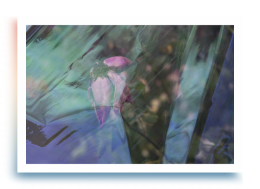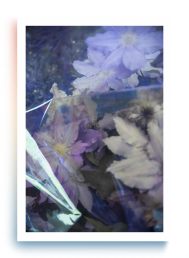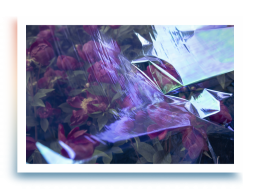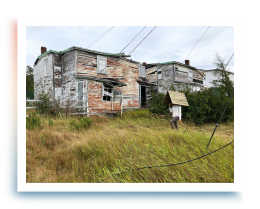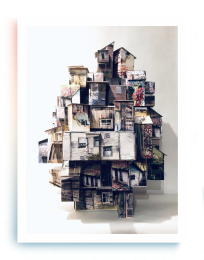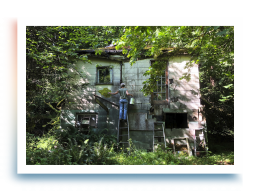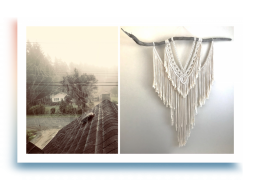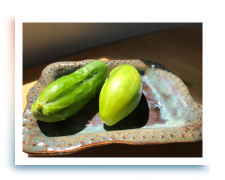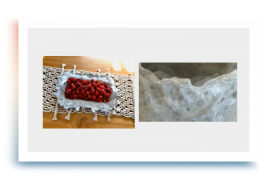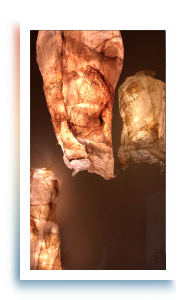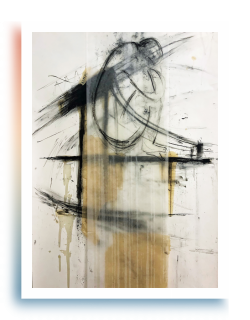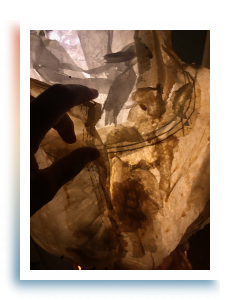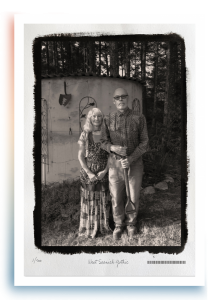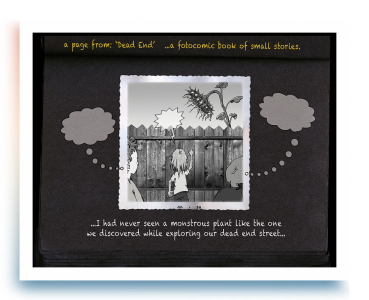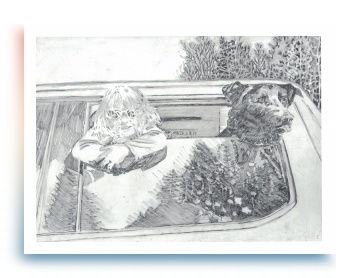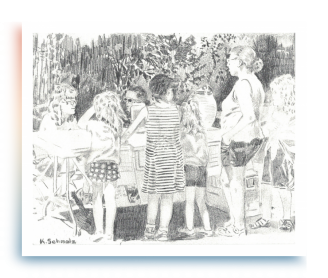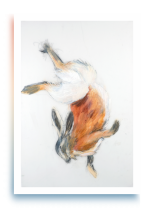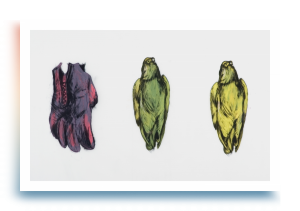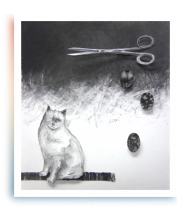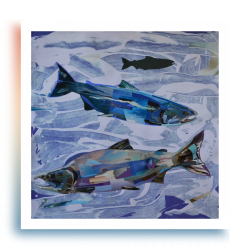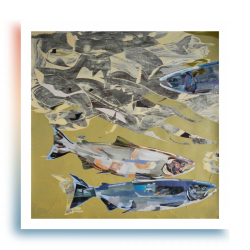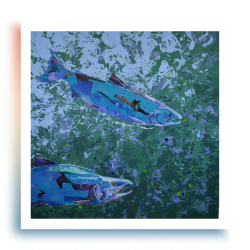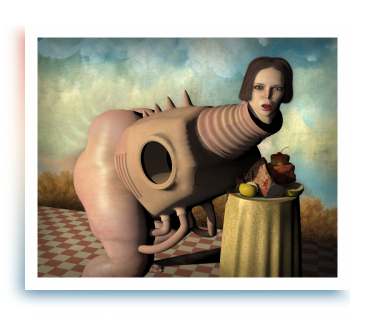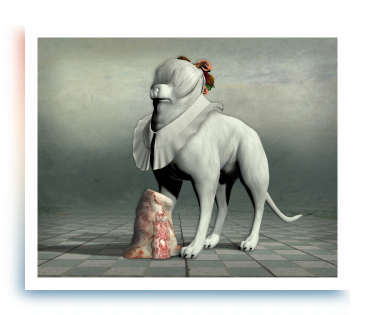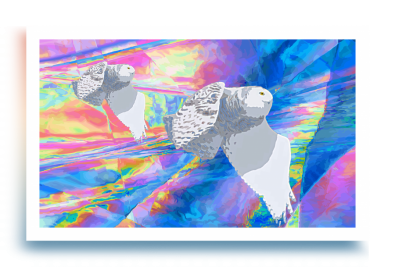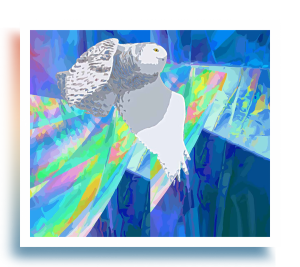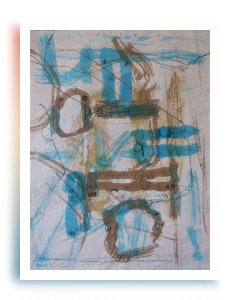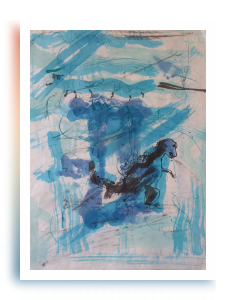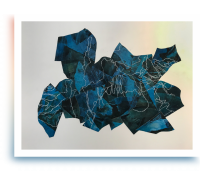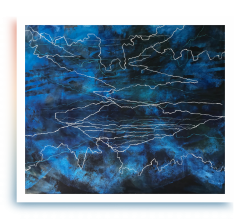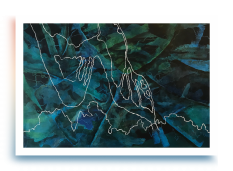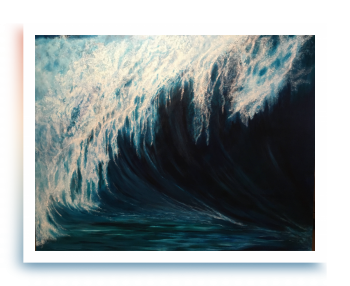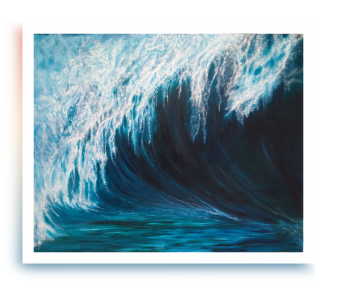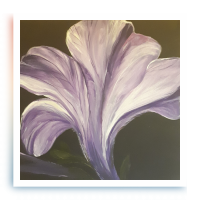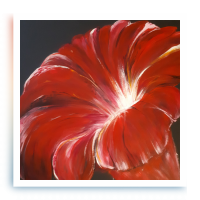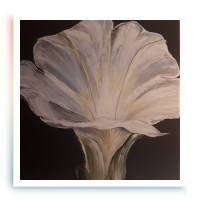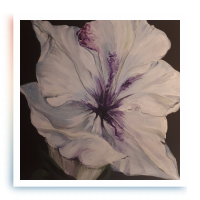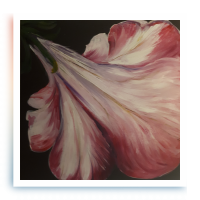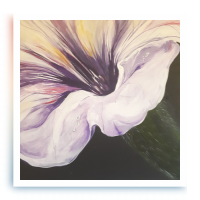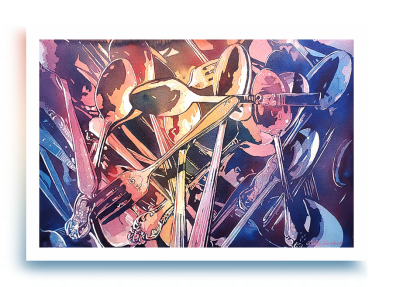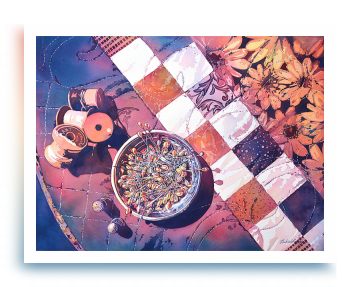“The work of art is never just an object, the artwork, but is always a process; a transitional moment when our assumptions about the world are brought into crisis and we are able to see the world in a new and unique way” (Bolt, 2010, p. 34).
This virtual exhibition brings together recent work made by faculty of Art Education at the University of Victoria, producing a rich description of the personal, social, cultural, and political places occupied and navigated this past (unexpected) year-and-a-half. Countering more dominant narratives regarding the current global pandemic, it makes present our vital materiality – our artistic practices and processes, the technologies for their production, and the bodies of knowledge in/forming the work – if for the time being – in virtual form.
Presence in Absence is a reminder that although many of us were not teaching, researching or creating art on campus during the pandemic, our practices were very much present in our everyday lives. As practice-led researcher Barbara Bolt argues in the above quote, the artworks on exhibit are not ‘just’ objects – they are the by-products of deeply sustained individualized engagements with ideas and investigations into materials and processes. For many of us, this became a necessary way to participate in and understand our (changing) world. Presence in Absence not only makes visible our practices, it confronts the viewer with the weight of our on-going absence. One that we hope, is only temporary.
Statement by Natalie LeBlanc, August 2021.
Exhibition curated by Natalie LeBlanc, Alison Shields and Michelle Wiebe.

This is a new and ongoing series of images in which I stage sheets of iridescent cellophane amongst my garden to be photographed. They represent my recent interest in flowers as a central motif within my art practice. This may have something to do with my gravitation towards gardening during the pandemic (I know I’m not alone in this pursuit!). I’m interested in the way the cellophane veils refer to so many things at once: a dream-like Instagram filter, plastic wrapped flowers at the grocery store, and the shiny, plasticky, feminine materials that lined my 1990’s-2000’s childhood. In my practice at large, I have been investigating the nostalgic quality of these materials. For example, other recent artistic explorations have included holographic stickers shaped like flowers and butterflies. My goal in working with these objects, motifs, and materials is to generate imagery that offers unabashed sentimentality and escapism, while exploring the cultural value of plastic (despite the weight of its environmental impact).

My studio practice explores the experience of home as ecological interdependence. Through site-specific performance, and participatory sculptures documented through photography and video, the work questions the relationships between ecology, displacement and belonging. The work I engage with in the studio is informed by my work with students and individuals in the classroom and the community. These vital collaborations have taught me about the importance of listening, care, respect, and the role of belonging in supporting depth of engagement, creative risk taking and growth. My research as an artist engaged in social practice parallels that of my work in the classroom. As an artist, I am engaged in a process of listening to the world to reflect on what it means to be at home with ourselves and others on this planet, to treat everyone and every species as kin. As an instructor, I listen to students to question and expand approaches for creating safe spaces for symbiotic inquiry that allow for diverse individuals to give voice, question, express and creatively explore.

Under ‘normal’ circumstances, a home is a site rich in social and cultural relations and temporalities (Pink & Moroşanu, 2016). During the pandemic, home played an even greater importance in everyday life. It housed ‘more’ of us – for longer periods of time, and for activities it was not necessarily intended for. Having moved to my current residence during the pandemic, this series documents and makes visible how I found and more importantly made home by delving deeply into my artistic and pedagogical practices. As Art Education scholar David Herman Jr. (2020) argues, the object of home is a place of familiarity and comfort – recognizability. As we move further from home, we seek the familiar in the strange as a process of organizing and returning to what feels normal (Boulton & LeBlanc, In Press). The strawberries and cucumbers were grown in my garden. All ceramic vessels and macramé were handmade in my studio. The macramé table runner sits on top of a live edge wooden table made by my husband and I during lockdown. Layers of Home brings together the studio courses (ceramics, digital arts, digital presentations) that I taught on-line this past year while emphasizing the time and processes involved in a home-made/handmade art practice.

“Cocoon is the place where you sew yourself back together before you step outside into a new life… how do we prepare ourselves for a future that holds the unexpected?” ~ G. Doyle
The word imprint can suggest an involuntary way in which humans shape themselves and are shaped over time through interpersonal relationships and circumstances. Negotiating life’s rhythms: the joys and sorrows; opportunities and challenges; struggles and successes, creates experiences and memories that leave lasting impressions. These influence how we continually evolve as individuals and members of a global community.
Time spent in the studio over months of social distancing and isolation due to the pandemic informed the images selected for this digital exhibition. Drawings and sculptures were created from mixed papers, sewing patterns and beeswax representing bonds of family, friends, colleagues, and students whose creative resilience served as inspiration. These were part of a solo exhibition at arc.hive Artist Run Centre in Victoria September, 2020.
Since the onset of the pandemic there has been time for cocooning and turning inward. There has been time for sanctuary and quiet, darkness and melancholy and renewed gratitude for people whose support makes a positive difference in life.
As relationships and experiences imprint on memory, traces and impressions left behind beg the question – what might the future hold?

Collaborative, Collective, Sequential & Mixed.
My art is a mess of visual questions looking for better questions.
- How does ‘real’ work when drawings and photos co-exist?
- How many ways can time flow when images are in sequence?
- When a story activates all of your senses (is a ‘transmedia’ experience) how many literacies is that?
To my mind, graphic novels and comic books are a great analog for the way layers of meaning intermix different experience visuality, language, sound and time in ways that can impact community and learning. Sometimes in isolation, sometimes in collaboration, my art is built from singular and collective questions resulting in ‘art practice’, research, or ‘just’ play.
As an Artist-Educator, my ‘space’ has (at least) 3 dimensions: the studio, the classroom and the theoretical architecture of the social sciences. Photography and cartooning have been part of me since I was small and continue as part of a spectrum of making that stretches between the handmade and the digital, the singular and the multiple.

I have just finished teaching AE 305 Drawing, so naturally, drawing is on my mind. Since the courses in art education are geared both to the understanding and utilization of visual tools while also exploring the ways art education enriches the lives of children, I chose this work in an attempt to illustrate these dual roles. As an art instructor of both children and adults, I emphasize the need for students to consider the unique factors that make each of them special and express these in their artistic choices of subject-matter, materials and style. While this art work depicts the individuality of the subjects, I hope it also speaks visually about my life-long joy in celebrating each young person’s unique path as a human being.

My art explores aspects of human nature that are commonly considered to be outside our everyday field of vision. I invite the viewer to engage in looking at that which is often selectively and socially overlooked or avoided, by negotiating the relationship between the mark and the subject matter. Objects that once had a meaning, but are now discarded, no longer whole or useful, are re-examined as objects of beauty and presented within different circumstances/contexts. The work presents a mixture of incongruity, delicacy, poignancy, darkness, humour and playfulness.
As an artist, I’m interested in the paradoxical presentation of imagery that challenges the viewer to look beyond the aesthetically rendered and sensually tactile surface. I try to find a balance between the disturbing and the wonderfully absurd and to let the inherent qualities of both prevail.
As an educator, I encourage students to challenge themselves beyond a superficial response to projects and to look for ideas and imagery in unexpected places. My goal is to support them in their process of learning to let go of preconceived ideas about artmaking.

For some years the various species of Pacific salmon and their life journey has been the theme of my art. I’ve long admired these magnificent creatures, thrilled to see their athleticism as they leap falls and endure other hardships/dangers to return to the stream of their birth where they spawn the next generation. This interest draws together visual art and ocean sciences.
My artistic responses draw upon acrylic painting techniques and also collage; magazine photos are used to harvest shapes, colours and textures that can contribute life-like features…eyes, gills, fins. Acrylic painting techniques also extend the range of expressive means: brush application, scraping, pouring, spraying, blotting, all these provide a range of watery environments from calm ocean depths to crystal waters and turbulent swollen streams.
The fish are made separately. Composing involves moving the fish within the square/stable format, much like staging a scene to find expressive relationships. Working in series always begs the question “What next?”
Using mixed media/collage can be challenging but when it is successful it can be very gratifying. While retired I continue to create and co-exhibit with colleagues in this and other exhibition venues.

I work with digital tools and techniques, focusing on an integration of 3D modeling software and various graphic processing programs in order to construct a theatrically surrealistic language with the objective of eliciting questioning attitudes in the mind of viewers. For me, the enclosed space of the visual image is a dramatic cerebral theater populated by realistic sets, objects, and figures which when combined with intention, offer challenging mental puzzles.
Walking a thin tightrope between the obvious and the absurd, I construct sets which host small dynamic dramas based on the mind’s ability to build meaningful narratives from enigmatic sources. The resulting images are to be seen for what they are, and then for what they may not be.
Although I arrange my objects in specific ways to express my own ideas, I am fully aware that the way the imagery is designed will lead to a multitude of different interpretations. For the careful observer, directional maps are suggested in each image. These maps are woven into the location, pictorial relationships, and surface appearances of the actors in each composition. I intend that the viewer will engage with the work, note surfaces, relationships, symbols, and metaphors, and will then construct personal meaning from the engagement.
Like all studio-based languages of imaginative possibility, I have merely begun the journey of building and refining my own visual syntax and grammar of cerebral imagination. Each of my works is a record of that journey.

FACING A COVID STORM
I use metaphor, feelings and questioning techniques as inspiration to create scenarios and suggest art education programs should make allowances in their planning structures to include contemporary events and situations. Here is a scenario based on my studio practice that can be adapted for interdisciplinary teaching and learning using image making, poetry and film for expressing ideas related to apocalyptic events:
How can we convey the feeling of being battered by the Covid virus? The answer may be found in Nature and a call upon metaphors. The event of the virus may be described as an endless barrage of thunder and fiery lightning, shaking us to the core. Earthquakes also shake us with a mighty force. Covid is brutal, a raging storm. But Nature teaches us lessons about overcoming adversity.
An owl beats its wings through ice and snow, feathers torn by howling gales, body beaten as struck by flying debris. Despite the fury, the owl presses on with courage and determination. If we can adopt those attributes, perhaps we will learn to overcome the deeply unsettling feelings associated with apocalyptic events such as the Covid virus.

This work links to our Art Education Philosophy which encourages critical thinking, reflection and inquiry. As well, I enjoy using diverse materials, incorporating techniques from diverse cultural practices.
These paintings are inspired by early Godzilla movies (1950-late 70’s) in which Godzilla was used as either a metaphor for the arrival of chaos or as an avenging protector at time of threat. I use Godzilla as a humorous symbol for the difficulty we are experiencing with COVID-19, humour being a type of medicine for anxiety. Anxiety is a real threat to wellbeing.
This painting/drawing series mixes painting (brush strokes) and drawing (mark-making), to create backgrounds that are lyrical abstractions. The paintings are on Eastern “rice” papers which purpose both sides-one smoother for calligraphy and the other with “tooth” for painting. I use both sides to create a variety of textures. We are constantly being asked to “isolate” and to consolidate at the same time-which is difficult to accomplish.
The virus and the protocol to combat it is in a constant state of flux and has affected the world and changed how we operate, begging the question of what the future holds.

Blue
And so I fell in love with a color – in this case, the color blue – as if falling under a spell, a spell I fought to stay under and get out from under, in turns. ~Maggie Nelson, Bluets, 2009
The world is blue at its edges and in its depths. This blue is the light that got lost. Light at the blue end of the spectrum does not travel the whole distance from the sun to us. It disperses among the molecules of the air, it scatters in water. Water is colorless, shallow water appears to be the color of whatever lies underneath it, but deep water is full of this scattered light, the purer the water the deeper the blue. The sky is blue for the same reason, but the blue at the horizon, the blue of land that seems to be dissolving into the sky, is a deeper, dreamier, melancholy blue, the blue at the farthest reaches of the places where you see for miles, the blue of distance.
We treat desire as a problem to be solved, address what desire is for and focus on that something and how to acquire it rather than on the nature and the sensation of desire, though often it is the distance between us and the object of desire that fills the space in between with the blue of longing. ~Rebecca Solnit, A Field Guide to Getting Lost, 2005

“It is only by much drawing, drawing everything, drawing increasingly that one fine day one is very surprised to find it possible to express something in its true spirit.” ~ Camille Pissaro
I am drawn to paint waves again and again because no two waves are the same and therefore each painting involves problem solving. If I continually think critically, reflect and inquire as I move paint across canvas and if I engage in ongoing study of the ever-changing ocean surface, I hope for moments when I can express elements of the spirit of each wave.

My artwork consists of nature inspired paintings and I have often communicated my feelings about my personal interest in nature through my artwork. Petunias flowering on my patio are the source of my imagery for this series. Observing them daily, flourish and grow from one to dozens, I enjoy their bold colors and appreciate the sophistication of nature’s own art form in every bloom.
Even though my initial training is in Applied arts and design, I find myself engaging in the technical and formal exploration of media, working with the medium of acrylics. Rather than attempting to create a realistic interpretation of petunias, I have focused on revealing the expressive elements of light, texture, and colors.

This series of paintings were created as an homage to the women in my life that are family and have become family. It is because of the courage and determination of these women along with their inspiration that I became an artist and I continue to create and paint today.
Golden is a representation of a friend that I call the sister I chose. Her laughter sparkles and she will light up a room with her presence. This friend loves to cook and collects items associated with cooking and bringing people together around a table for food and company. She has opened her home to me and my children, nurturing us with her recipes and her warmth. The painting is a collection from her drawer of forks and spoons that are ever at the ready for guests and friends.
On Pins and Needles is the latest in this series. It is the depiction of a new-found friend that has an artistic spirit akin to mine. Although she is a quilter, our passion for color and patterns are similar. She too has opened her home and her studio to me and my desire to explore the creative.
These paintings are created by pouring watercolour in liquid form. I feel that by doing so, I create a glow and a luminosity that is difficult to achieve any other way. It is through careful and thoughtful planning in the drawing stage that I can then allow the spontaneity of poured liquid paint to occur as I build up layers of color.
